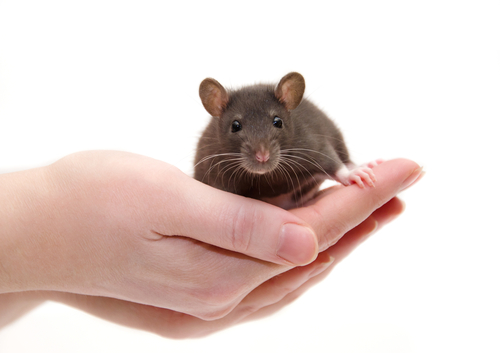Molecular ‘Tag’ Improves Efficacy of Gene Therapy for Pompe Disease in Mice, Study Shows

A molecular “tag” to improve distribution of the acid-alpha glucosidase (GAA) protein within cells enhanced the efficacy of gene therapy in a mouse model of Pompe disease, a recent study suggests.
The study, titled “AAV Gene Therapy Utilizing Glycosylation-Independent Lysosomal Targeting Tagged GAA in the Hypoglossal Motor System of Pompe Mice,” was published in Molecular Therapy – Methods & Clinical Development.
Pompe disease, a neuromuscular disorder, is caused by mutations in the gene that encodes GAA, a protein which normally breaks down a complex sugar called glycogen into a simpler sugar called glucose. These mutations limit or completely remove the protein’s ability to function, ultimately resulting in the toxic buildup of glycogen.
One treatment strategy that has been proposed is gene therapy — using a vector, typically a modified virus, to deliver a functional version of the gene that encodes GAA to cells. This would allow those cells to make their own working GAA.
A previous study used such a vector to target the muscles and nerves in the tongues of Gaa−/− (no functional copy of GAA) mice, a mouse model of Pompe disease. Although that study showed that modifying cells in this way is feasible, the number of cells — specifically motor neurons, the nerve cells that direct muscle movement — that actually made functional GAA was limited.
The researchers behind the new study theorized that those previous results were due to an inability of the “added in” protein to get to the right compartment within the cell. GAA normally functions in the lysosome, a cellular compartment (organelle) best known as the place where molecules are broken down.
Thus, the team created a version of the gene therapy that delivered instructions for a GAA protein that had a molecular “tag” — called a glycosylation-independent lysosomal targeting, or GILT tag. In simple terms, the GILT tag is a small addition to the GAA protein that is recognized by other proteins in the cell, which then facilitate the GAA’s transport to the lysosome. Moreover, researchers said that this tag may improve the uptake of the protein by cells that surround a cell that received the therapy and then secreted the GAA protein.
The investigators compared the gene therapy encoding, GILT tag-modified GAA to that encoding unmodified GAA in the tongues of the Pompe disease mice. They confirmed that both therapies could increase GAA expression in the tongues of these mice. Indeed, on average, both gene therapies increased overall GAA activity in the tongues to more than twice what was observed in wild-type mice — mice without Pompe disease.
The most striking finding was in the number of GAA-positive motor neurons in the mice’s tongues — specifically called XII motoneurons. On average, mice treated with the gene therapy encoding unmodified GAA had 59 GAA-positive XII motoneurons. Meanwhile, those treated with the gene therapy encoding the GILT tag-modified GAA had 185 GAA-positive motoneurons — a significant increase of over 200%.
It is important to emphasize that this study was done in mice, so whether the results have any bearing on possible treatment in humans remains to be seen. Additionally, the gene therapy in these experiments was delivered by a direct injection into the tongue, and only the tongue was affected. The researchers noted that different administration strategies may be needed for this therapeutic approach to be truly efficacious, particularly in people.
“Our results confirm that intralingual delivery of AAV9-GAA [modified virus encoding GAA] can effectively drive GAA expression in tongue myofibers [muscle cells] and XII motoneurons,” the researchers concluded. “The results also indicate that fusion of an IGFII GILT tag to the GAA transgene product enhances GAA expression in XII motoneurons.”






